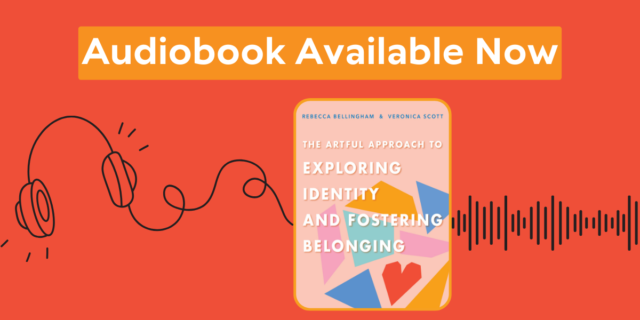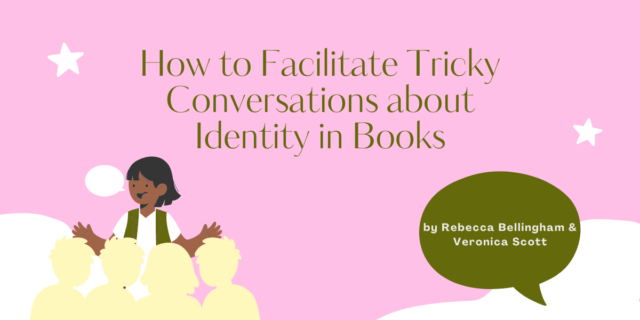
We don’t age out of the read-aloud experience. Reading to kids is a vital part of creating a community of readers in your classroom and supporting a balanced, rigorous, and joyful literacy curriculum that feeds your students’ souls and minds as well as your own.
Works of art don’t appear out of thin air, and it’s fascinating to hear about how ideas come to be. We can imagine the hours of writing at the desk or rehearsing at the piano. We can imagine, too, the hours any painter or sculptor spends working and reworking his colors or clay. What we often never know is what got cut along the way, what hard choices an artist had to make on her creative journey. Any piece of art is made up of a million tiny choices and sometimes difficult, even painful ones.
If we are to pull off master strokes in our read-alouds, we have to have imagination and vision. We have to make choices about what works best and remember that sometimes our omissions are as important as the things we decide to include. As is true with all our teaching moves, we must remember to choose wisely.
The Artful Read-Aloud Tip 29: Be Intentional
There are many ways to be intentional about choices we make as we prepare and implement our daily read-alouds. The first, and perhaps most important, is book choice. We must think carefully about what the best text is for this unit, this group, this moment in the school year, or this moment in time.
We must also choose books that reflect a wide variety of voices, genres, authors, and points of view. We must remember the beautiful principle of creating windows and mirrors for our students by filling our classrooms with books that reflect back the experiences, cultures, family structures, losses, dreams, injustices, and joys of our kids, as well as books that help kids imagine and understand the lives, voices, and perspectives of people who are unlike them, who have grown up or live in unfamiliar places or historical times. These windows and mirrors make it possible for kids to see value in themselves and also see beyond themselves. They make it possible for kids to experience and understand that we are connected through story and through our common humanity.
As you are deciding on your read-alouds for the year, you might ask yourself:
We don’t age out of the read-aloud experience. Reading to kids is a vital part of creating a community of readers in your classroom and supporting a balanced, rigorous, and joyful literacy curriculum that feeds your students’ souls and minds as well as your own.
Works of art don’t appear out of thin air, and it’s fascinating to hear about how ideas come to be. We can imagine the hours of writing at the desk or rehearsing at the piano. We can imagine, too, the hours any painter or sculptor spends working and reworking his colors or clay. What we often never know is what got cut along the way, what hard choices an artist had to make on her creative journey. Any piece of art is made up of a million tiny choices and sometimes difficult, even painful ones.
If we are to pull off master strokes in our read-alouds, we have to have imagination and vision. We have to make choices about what works best and remember that sometimes our omissions are as important as the things we decide to include. As is true with all our teaching moves, we must remember to choose wisely.
The Artful Read-Aloud Tip 29: Be Intentional
There are many ways to be intentional about choices we make as we prepare and implement our daily read-alouds. The first, and perhaps most important, is book choice. We must think carefully about what the best text is for this unit, this group, this moment in the school year, or this moment in time.
We must also choose books that reflect a wide variety of voices, genres, authors, and points of view. We must remember the beautiful principle of creating windows and mirrors for our students by filling our classrooms with books that reflect back the experiences, cultures, family structures, losses, dreams, injustices, and joys of our kids, as well as books that help kids imagine and understand the lives, voices, and perspectives of people who are unlike them, who have grown up or live in unfamiliar places or historical times. These windows and mirrors make it possible for kids to see value in themselves and also see beyond themselves. They make it possible for kids to experience and understand that we are connected through story and through our common humanity.
As you are deciding on your read-alouds for the year, you might ask yourself:
- What skills or strategies do I want children to practice in particular? What books would be a good fit for that work?
- What experience do I want to create in the room: One that makes us laugh and bond? One that helps us think about what kind of community we are and want to be? What books would be a good fit for that?
- What other content across the day do I want to support? What book might give kids an entry point into some of the conceptual knowledge or information that will help them along that path?
- How can I include my students’ needs, interests, or opinions about what to read aloud next before I get started in a new book?
The choices we make about the texts that we bring into our classroom are some of the most powerful ones we can make. With every book you consider for read-aloud, ask yourself:
- Who or what is the story or book about?
- Who wrote the book?
- From whose point of view is this book written?
- Whom might this book be a mirror for; whom might this book be a window for? How might it be both for lots of different kids?
You might need to forego a book you love to read one that is less familiar in order to represent a fuller spectrum of human voices, experiences, and points of view. Let me be clear: this is not about checking off boxes of voices you have represented, but about developing a mindfulness, about paying attention to how your choices reflect the spectrum of our shared humanity.
Once we decide what we might read aloud and begin planning, we face a whole host of other decisions: where to think aloud and what to model, where to invite children into conversation, what moments we might reread, what words or passages we might embody. And as we read aloud, we also make choices about how long to let a conversation continue, whose thinking or partnership talk to highlight, and when to linger and when to move on. Sometimes our best intentions end up cluttering our read-alouds, so we must be as mindful about the moments when we choose to do something as we are about the moments when we decide to leave well enough alone.
It can also be helpful to clarify for yourself when you might choose to simply think aloud instead of stopping for conversation. These are some examples of times you might be more likely to just think aloud:
-
In the beginning of the year, when revving up expectations for the thinking work you will be asking students to try on and learn. You want them to have concrete examples of what to aim for in their jots, turn-and-talks, conference conversations, and silent conversations with themselves.
-
When you’re modeling a new strategy or skill that kids need explicit demonstration with, at all levels of text.
-
If the text complexity takes a jump from what prior read-alouds demanded, you might demonstrate how your thinking becomes more sophisticated and nuanced. When you’re modeling strategies and skills students might have practiced in grades for years prior but which you have never modeled, it can serve as a mentor text for what you’re hoping they can begin to apply in their independent reading lives across a unit or across the year.
-
In the beginning of more complicated books, you want them to see how your mind makes sense of more complicated texts and opening chapters.
The more you read aloud, the more you begin to develop a felt sense for when to stop, when to come up for air, when to move on, when to rely on your voice and body, when to pause to unpack or think aloud, when to invite kids to talk, and when to let a whole-group conversation emerge. Like anything, your intuition gets stronger with practice. And your choices become more astute.
 To learn more about The Artful Read-Aloud visit Heinemann.com.
To learn more about The Artful Read-Aloud visit Heinemann.com.


